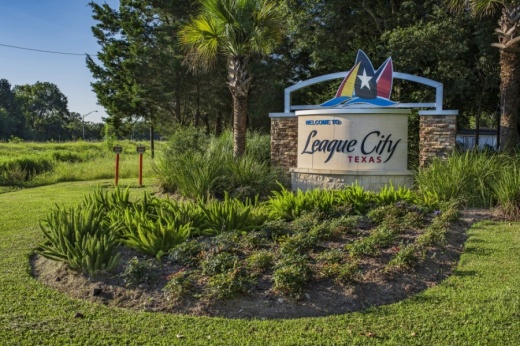Now, the council is considering relaxing those ordinances at staff’s request.
Before October 2018, League City’s standard for new developments was that each building be built at least 18 inches above the base flood elevation or crown of the nearest street. City Council voted to increase that standard to 24 inches above the base flood elevation or 3 inches above the 500-year flood elevation. By doing this, the council created more flooding protection for future developments.
At the time of the change, over 1,400 residences across seven different areas of the city were under development. Those in-development properties were grandfathered into the old standard, meaning they did not have to meet the new development requirements, Engineering Director Chris Sims said.
League City was recently audited by the Texas Water Development Board. During the audit, city officials learned the Federal Emergency Management Agency is changing how its National Flood Insurance Program defines the risk of a building flooding. Instead of using flood plain maps, which are undergoing changes, FEMA will use other unknown standards to determine how much to charge for flood insurance to a home or other building, Sims said.
When told of what League City did for the 1,400 residences in 2018, FEMA’s response was for the city to classify these developments separately as “at risk,” Sims said.
Normally, League City officials would be fine with FEMA’s request. But because FEMA is changing how the NFIP defines how at risk a house is of flooding, FEMA’s request could result in these 1,400 properties paying more in flood insurance, Sims explained.
As a result, Sims requested the council alter the ordinance slightly to remove a requirement to build developments 2 feet higher than the nearest adjacent grade. Of all the requirements in the ordinance, this one has the smallest effect on whether a property will flood, Sims said.
By removing this requirement, these 1,400 properties would likely not need to be classified as at risk and therefore might avoid potential flood insurance cost increases. However, as council members pointed out, altering the ordinance would allow for more lax developments going forward.
“We have gone the extra mile to keep people’s feet dry,” Council Member Larry Millican said of the ordinance, which is one of the strictest in the area. “I think by doing this action we’re regressing rather than keeping going forward.”
Council Member Nick Long agreed.
“We’re solving one problem for 1,400 and creating another problem for 30,000 homes,” he said.
Long said changing the standards may be “gaming” the insurance system by artificially lowering the cost of flood insurance for properties without actually affecting how likely they are to flood. Meanwhile, changing the standards puts more future properties at risk of flooding, he said.
Council Member Chad Tressler disagreed, saying the most important standards in the ordinance—building 24 inches above the base flood elevation and 3 inches above the 500-year flood elevation—will remain untouched.
Additionally, the council could alter the ordinance now to avoid having to classify these properties as at risk and simply make a stricter ordinance in the future, Tressler said.
Council members agreed there are too many unknown variables. No one knows for sure flood insurance costs would increase if the 1,400 properties were classified as at risk, and no one knows what would happen if the city rejected the TWDB’s audit entirely, officials said.
Council voted 6-2 with Tressler and Council Member Hank Dugie opposed to postpone the item to the May 25 council meeting to give staff more time to find answers.





